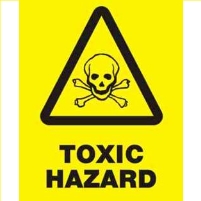U.S. Companies Have Dumped 30 Trillion Gallons of Toxic Liquids into the Earth…Are They Coming Back to Haunt Us?
Tuesday, June 26, 2012

The water Americans drink is threatened from below. For the past half-century or so, U.S. corporations have injected more than 30 trillion gallons of toxic liquid waste deep into the earth, believing that multiple layers of rock would prevent the waste from leaking into underground aquifers that supply drinking water to millions. There are more than 680,000 underground waste and injection wells nationwide, more than 150,000 of which shoot industrial fluids thousands of feet below the surface, underneath the aquifers. Scientists and federal regulators acknowledge that they do not know how many of the sites are leaking, but insist that the risks posed by all this dumping are minimal.
Now, however, geologists are finding that deep layers of rock beneath the earth may not safely store the waste for millennia. According to the old model, vertical movement of underground fluids should not happen at all, or should occur over thousands of years or more. Yet a 2011 study in Wisconsin found that human viruses had managed to move through such rock to infiltrate deep aquifers, and a study published in April of the Marcellus Shale formation in New York showed that chemicals could leak through natural cracks into aquifers used for drinking water in just 100 years, and that man-made cracks created by fracking (hydraulic fracturing) could allow chemicals to reach the surface in as little as “a few years, or less.”
According to an investigation by Pro Publica, Structural failures inside injection wells are routine. From late 2007 to late 2010, more than 17,000 well integrity violations were recorded nationally. Records from all over the U.S. show that injection wells have repeatedly leaked, allowing toxic chemicals to get to the surface or into aquifers. For example, in 2010, contaminants from a well bubbled up in a West Los Angeles dog park, with similar incidents occurring in Oklahoma and Louisiana over the past three years. In South Florida, 20 disposal wells failed in the early 1990s, releasing partly treated sewage into aquifers that the growing region may one day use for drinking water.
Responding to these problems, Kansas shut down at least 47 injection wells in 2010 because their mechanical integrity could not be restored, while Louisiana shut down 82 and Wyoming shut down 144. Meanwhile, 17 states—including Alabama, North Carolina, South Carolina and Wisconsin—have banned Class 1 hazardous deep well injection.Class 1 wells handle the most hazardous materials, such as fertilizers, acids, asbestos, PCBs and cyanide, while Class 2 covers disposal wells and wells in which fluids are injected to force out trapped oil and gas.
Given the current boom in hydraulic fracturing, or fracking, to obtain natural gas buried in deep rock formations, the problems associated with deep well injection of toxic waste is likely to get worse before it gets better, especially given the lack of any viable alternative.
-Matt Bewig
To Learn More:
Injection Wells: The Poison Beneath Us (by Abraham Lustgarten, Pro Publica)
- Top Stories
- Unusual News
- Where is the Money Going?
- Controversies
- U.S. and the World
- Appointments and Resignations
- Latest News
- Trump to Stop Deportations If…
- Trump Denounces World Series
- What If China Invaded the United States?
- Donald Trump Has a Mental Health Problem and It Has a Name
- Trump Goes on Renaming Frenzy






Comments